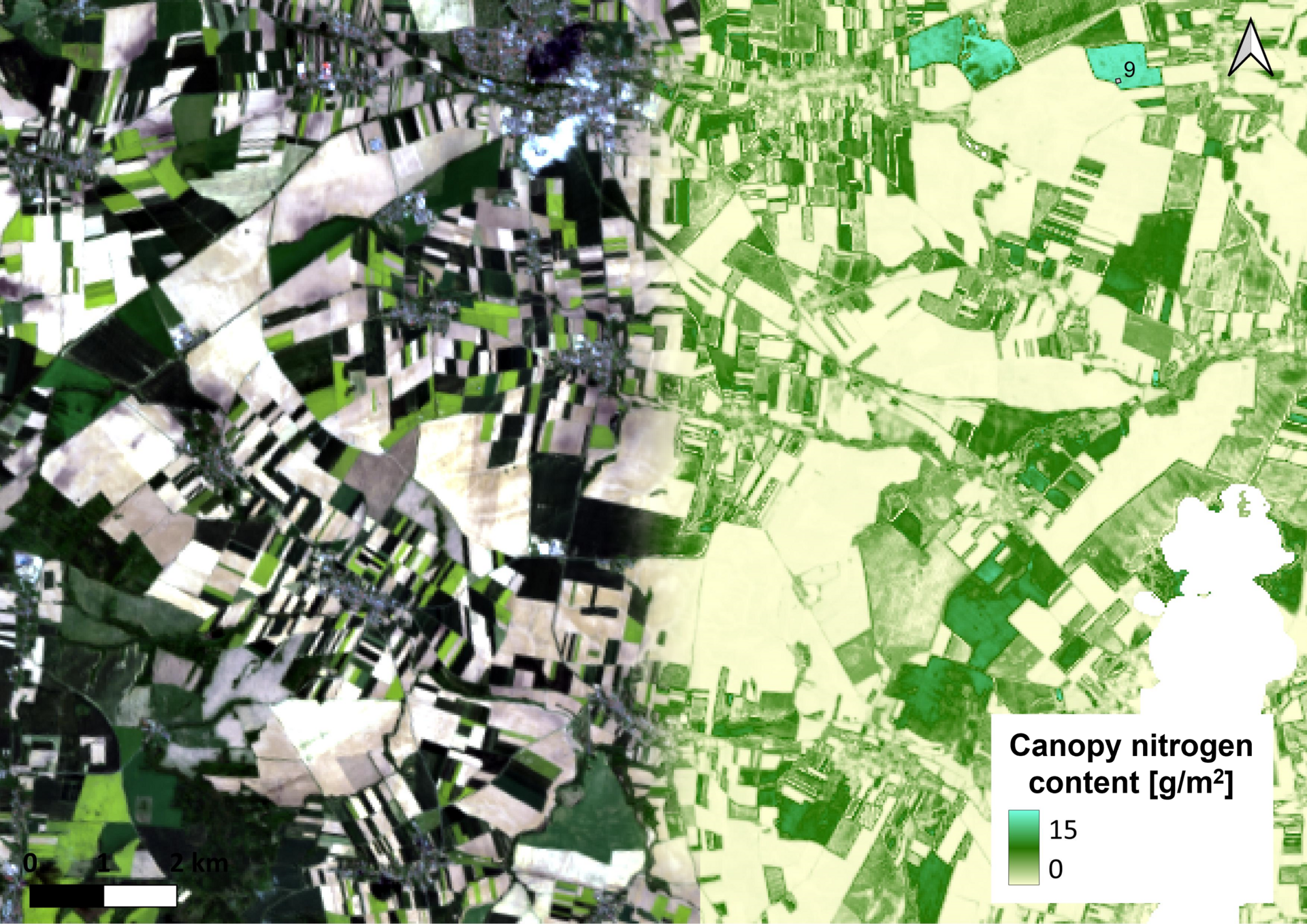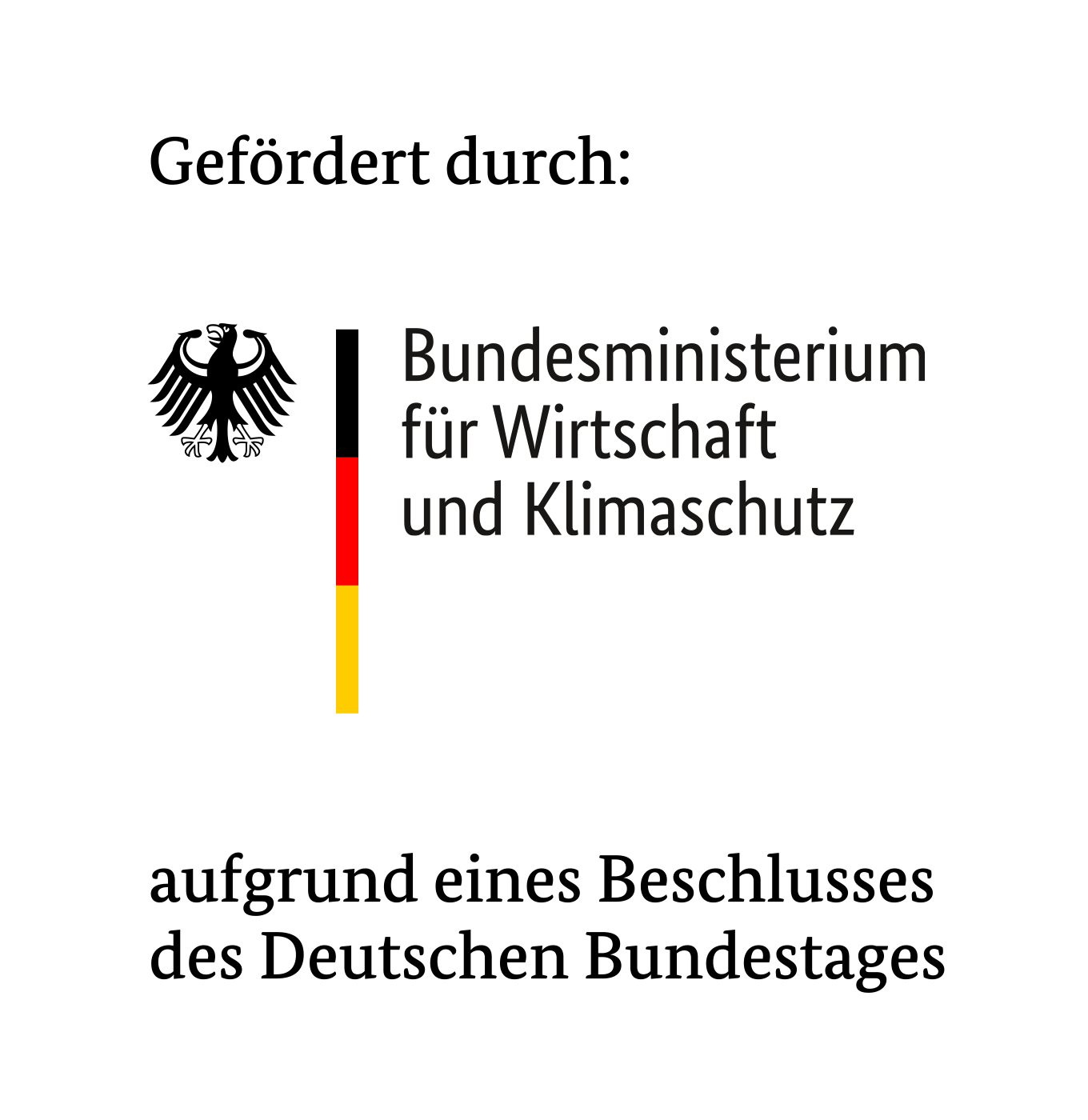Bremen, August 22, 2025 – How can the quality of forage and resource consumption in agriculture be monitored effectively? The answer lies in space: Through hyperspectral satellite data, OHB System AG aims to demonstrate in the HyLAP project (Hyperspectral Products for Agricultural Practice) how grassland can be optimally managed. These data provide insights into plant properties that are invisible to the naked eye – opening up new possibilities for more precise and resource-efficient farming.
At the heart of the study is the German hyperspectral satellite EnMAP (Environmental Mapping & Analysis Program), which has been in orbit for three years. With its 242 spectral bands, it captures light from the visible to the shortwave infrared range. Developed and built by OHB on behalf of the German Space Agency at the German Aerospace Center (DLR), EnMAP delivers data of unprecedented quality for scientific research. These data are now being explored for practical applications – for example, by farmers seeking to manage their fields more precisely.
“With HyLAP, we want to show how hyperspectral data can be meaningfully applied in practice – even in combination with traditional methods such as field inspections,” explains Dr. Anita Bayer, head of OHB’s “Earth Observation Applications” team. Together with stakeholders across the agricultural value chain – including state authorities, agricultural insurers, and private companies – her team is investigating grassland areas and whether improved monitoring can help to increase the quality and quantity of forage.
Timing the Cut is a Key Factor in Forage Quality
Grassland is mowed up to six times a year – but the exact timing is usually based on the farmer’s experience and weather conditions. Laboratory analyses are rare, and guidelines from state agencies rely on local samples. Hyperspectral satellite data, on the other hand, can provide comprehensive information on the nitrogen content of plants – and thus their protein levels, a key indicator of forage quality. Regular data acquisition could help determine precisely when and where to mow, depending on the animals’ needs: Dairy cows require protein-rich feed, while young animals can manage with less.
Sugar Beets in Focus – In Collaboration with KWS
In addition to grassland, the HyLAP team is also focusing on sugar beets in collaboration with the seed company KWS. Here, a unique feature of hyperspectral sensors is leveraged: unlike other satellite-based sensors, they capture a continuous spectrum, which is crucial for determining plant and crop characteristics. This enables new possibilities for precise plant monitoring and sustainable cultivation. The collaboration with KWS is already underway in the ESA project AgriCEM, which prepares the use of data from future satellite missions (especially the Copernicus missions CHIME and LSTM) in agricultural practice.
HyLAP, by contrast, focuses on using the already available EnMAP data for demonstration purposes. The project started beginning of 2025, runs for 16 months, and is co-financed by the German Space Agency at DLR.
About EnMAP, CHIME and LSTM
EnMAP (Environmental Mapping and Analysis Program): German hyperspectral satellite, imaging range from 420 to 2450 nm (blue visible light to short-wave infrared) in 242 channels, shortest possible revisit time 4 days, spatial resolution 30 m, launch in April 2022, tasking mission.
CHIME (Copernicus Hyperspectral Imaging Mission for the Environment): 2 hyperspectral satellites, 200 spectral bands in the range from visible light to short-wave infrared (400-2500 nm), revisit time 12.5 days, spatial resolution 30 m, launch of first satellite: 2029.
LSTM (Land Surface Temperature Monitoring): 2 satellites for precise measurement of land surface temperature, revisit time 1-3 days, spatial resolution <50 m, launch of first satellite: 2029.
Contact for media representatives:
Marianne Radel
Head of Corporate Communications
Phone: +49 421 2020 9159
Email: marianne.radel@ohb.de
Contact for investors and analysts:
Marcel Dietz
Investor Relations
Phone: +49 421 2020 6426
Email: ir@ohb.de



